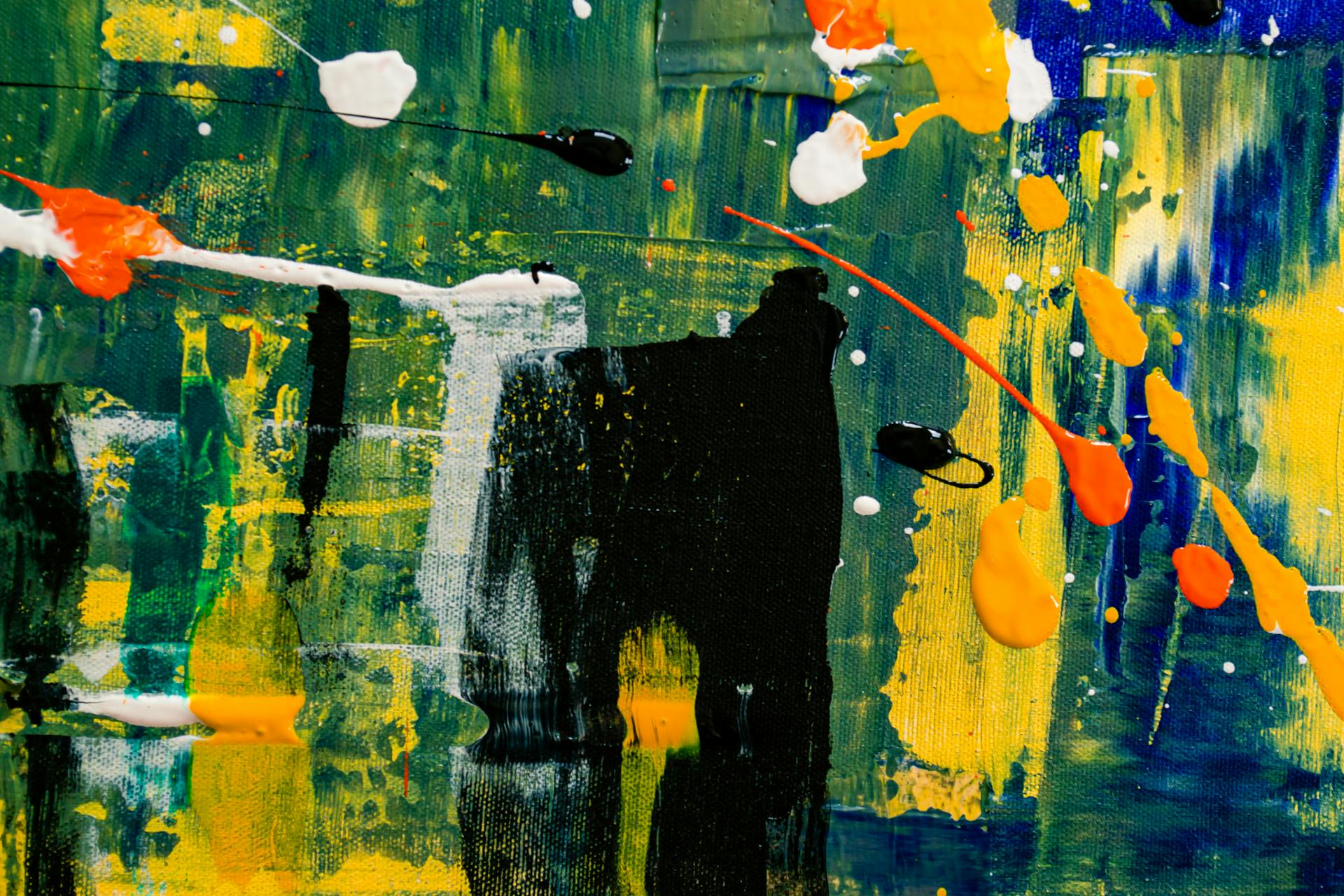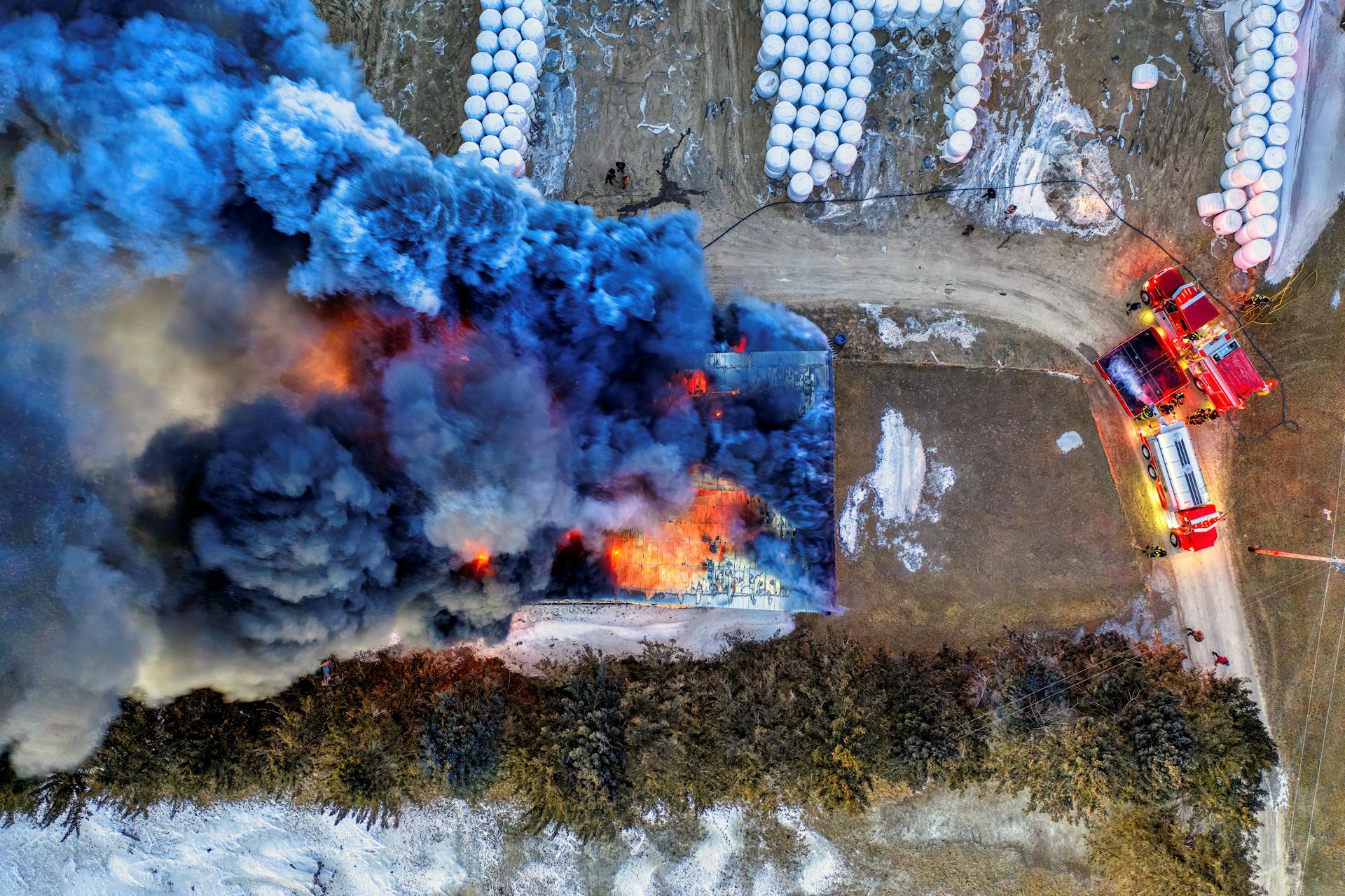
A canvas is a type of fabric that is commonly used for making paintings, tents, and other outdoor products. It is usually made of linen or cotton and is stretched over a frame of wood or metal. The word "canvas" is derived from the Latin word "cannabis," which means hemp. Canvas was originally made from hemp fiber, but today it is mostly made from cotton.
Canvas is a popular surface for painting because it is absorbent and does not reflect light. It is also durable and sturdy, which makes it ideal for outdoor use. Canvas is available in a variety of weights, textures, and colors. Overall, it is an excellent surface for painting, and its versatility makes it a popular choice for artists of all levels.
See what others are reading: Began Canvas
What is the difference between a canvas and a painting?
A canvas is a piece of fabric or other material used as a surface for painting, drawing, or for printing. A painting is a work of art made by applying paint, pigment, or other colorant to a canvas.
What is the difference between a stretched canvas and an unstretched canvas?
stretched canvas is a type of canvas that has been stretched over a wooden frame. This frame is usually made of stretcher bars, which are long, narrow pieces of wood that are joined together in a rectangular shape. The canvas is then glued or stapled to the frame.
Unstretched canvas, on the other hand, is a type of canvas that is not attached to a frame. It is simply a piece of fabric that is meant to be used for painting. It is often sold in rolls, and the painter must then cut it to the desired size and stretch it over a frame themselves.
What is the difference between a primed canvas and an unprimed canvas?
When an artist paints on a canvas, they are usually working on a primed canvas. A primed canvas is a canvas that has been coated with a layer of gesso, a substance that acts as a primer for the paint. This layer of gesso provides a smooth surface for the paint to adhere to and also helps to protect the canvas from the paint. An unprimed canvas is a canvas that has not been coated with gesso and is therefore not as smooth or protected as a primed canvas.
The type of canvas an artist chooses to use will often depend on the type of painting they are doing. For example, if an artist is doing a painting that requires a lot of detail, they may prefer to use a primed canvas so that the paint does not get absorbed into the canvas and the details are kept sharp. On the other hand, if an artist is doing a painting that they want to look more like a sketch, they may prefer to use an unprimed canvas so that the paint will be absorbed more and create a softer, less defined look.
In general, a primed canvas is going to be the better choice for most paintings. It provides a smooth surface for the paint to go on, which makes for a more consistent painting. It also protects the canvas from the paint, which can help to keep the canvas looking new for longer. However, there may be some situations where an unprimed canvas is the better choice. It really depends on the type of painting being done and what the artist is hoping to achieve.
What is the difference between a cotton canvas and a linen canvas?
There are many different types of canvas available on the market today, each with their own unique set of benefits and drawbacks. Two of the most popular types of canvas are cotton canvas and linen canvas. So, what is the difference between a cotton canvas and a linen canvas?
Generally speaking, linen canvas is much higher quality than cotton canvas. Linen is a stronger, more durable fabric, and thus can withstand more wear and tear. Additionally, linen canvas is less likely to warp or stretch over time. However, all of this comes at a cost – linen canvas is significantly more expensive than cotton canvas.
So, which type of canvas is right for you? It really depends on your needs and budget. If you need a durable, long-lasting canvas that can withstand heavy use, linen canvas is a great option. However, if you're on a tight budget, cotton canvas may be a better choice.
What is the difference between a stretched canvas and a canvas panel?
A stretched canvas is a piece of fabric that has been stretched over a frame, usually made of wood. A canvas panel is a flat piece of wood or other material that has been coated with a primer and then covered with a layer of canvas.
What is the difference between a gessoed canvas and an ungessoed canvas?
A gessoed canvas is a canvas that has been coated with a thin layer of gesso. Gesso is a white paint mixture made of a binder, such as gypsum or rabbit-skin glue, and chalk or white pigment. It is used as a ground for oil painting and acrylic painting and to prepare canvas for painting.
An ungessoed canvas is a canvas that has not been coated with gesso. It is typically made of a cheaper, low-grade cotton or linen fabric and is intended for use with oil paints or acrylic paints. It is not as durable as a gessoed canvas and is more likely to warp and become misshapen over time.
What is the difference between an acrylic primed canvas and a oil primed canvas?
When it comes to choosing a primed canvas, there are two main types: acrylic primed and oil primed. While both types of canvas have their own benefits, there are some key differences between them that should be considered before making a purchase.
Acrylic primed canvas is often seen as the more affordable option, as it doesn’t require as many specialized materials to prepare. This also means that it’s typically quicker and easier to prime an acrylic canvas. However, some artists find that oil paints don’t adhere as well to an acrylic primed surface, which can result in the paint flaking or peeling over time.
Oil primed canvas, on the other hand, provides a more traditional painting surface that is known for its durability. This option requires a bit more time and effort to prime, but many artists feel that it’s worth the investment. Oil paints tend to adhere better to an oil primed canvas, creating a longer-lasting finished product.
When deciding between an acrylic primed and oil primed canvas, it’s important to consider your budget, project goals, and painting preferences. If you’re looking for a quick and easy primed surface, go with an acrylic canvas. If you want a traditional painting surface that will last for years to come, oil primed is the way to go.
What is the difference between a stretched canvas and a roll of canvas?
There are a few key differences between a stretched canvas and a roll of canvas. Perhaps the most obvious difference is that a stretched canvas is already stretched over a wood frame, whereas a roll of canvas is just a piece of fabric. This means that a stretched canvas is ready to be hung on a wall or otherwise displayed, whereas a roll of canvas still needs to be prepared before it can be used.
Another difference between these two types of canvas is in their texture. A stretched canvas is typically much smoother than a roll of canvas, since the fabric has been stretched tight over the frame. This can make it easier to work with, since there are no wrinkles or other imperfections to contend with. However, some artists prefer the rough texture of a roll of canvas, as it can add another dimension to their work.
Still, other artists may choose to use a stretched canvas because it is less likely to warp or sag over time. When a roll of canvas is not stretched properly, it can start to warp or sag in the middle, which can ruin the overall look of the piece. A stretched canvas, on the other hand, is held taut by the frame, meaning that it is much less likely to suffer from these types of problems.
Ultimately, the choice between a stretched canvas and a roll of canvas is a matter of personal preference. Some artists find that one works better for them than the other, while others are happy to use either type of canvas. There is no right or wrong answer, so it is ultimately up to the individual artist to decide which type of canvas is best for their needs.
How do you stretch a canvas?
How do you stretch a canvas?
To stretch a canvas, you will need:
- A canvas
- A set of stretcher bars
- A hammer
- A screwdriver
- A set of pliers
- A utility knife
- A measuring tape
- A straight edge
- Some weights
- Some sandpaper
- Some primer
- A paintbrush
The first step is to measure your canvas. You will need to know the width and height in order to cut the stretcher bars to the correct size.
Next, use the straight edge and utility knife to cut the stretcher bars to size. Be sure to make the cuts straight and even.
Once the bars are cut, use the sandpaper to rough up the ends. This will help the bars grip the canvas better.
Now it's time to start assembling the frame. Take two of the bars and line them up at the corners of the canvas. Use the hammer to tap the bars into place.
Repeat this process for the other two corners.
Now it's time to start attaching the bars together. Take two of the bars and line them up at one end. Use the screwdriver to drive a screw through the bars and into the canvas.
Repeat this process for the other three corners.
Once all four corners are attached, use the pliers to twist the turnbuckles until the frame is tight.
Now it's time to add the weights. Tie one end of a string to a weight and the other end to the stretcher bar. Repeat this process for all four corners.
Now it's time to add the primer. Apply a thin layer of primer to the surface of the canvas using a paintbrush.
Once the primer is dry, your canvas is ready to be stretched!
Frequently Asked Questions
What is a canvas in art?
A canvas is a strong, woven cloth traditionally used by artists as a support (surface on which to paint).
What is the real meaning of canvas?
The original meaning of canvas was a cloth made from cotton, hemp, or linen that was used for tents, sails, and other purposes. It was also sometimes used to make paintings on.
What is a canvas in computer?
In computer science and visualization, a canvas is a container that holds various drawing elements (lines, shapes, text, frames containing others elements, etc.).
What is canvas usually used for?
Canvas is typically used for making sails, tents, marquees, backpacks, shelters, and other items where sturdiness is required.
What do you mean by canvas?
Canvas can refer to a piece of cloth, typically made of linen, hemp, or cotton, that is used as a surface for painting. It can also refer to the painting on such a surface.
Sources
- https://www.quora.com/What-is-the-difference-between-stretched-canvas-and-boarded-canvas
- https://www.fantasticframing.com.au/difference-between-canvas-stretching-to-floating-frame/
- https://drawandpaintforfun.com/linen-vs-canvas/
- https://pisnak.com/canvas-and-print/
- https://www.youtube.com/watch
- https://www.paintinggeek.com/what-is-the-difference-between-oil-on-panel-and-oil-on-canvas/
- https://homelifeanswers.com/question/what-is-the-difference-between-primed-and-unprimed-canvas/
- https://pisnak.com/gallerywrap-and-canvasprint/
- https://www.danschultzfineart.com/stretched-canvas-vs-canvas-panels/
- https://learn.microsoft.com/en-us/power-apps/maker/canvas-apps/getting-started
- https://www.reimaginedroom.com/what-is-the-difference-between-a-canvas-and-a-painting/
- https://www.ucsart.com/learn/blog/cotton-vs-linen-which-canvas-is-best-why
- https://artisticbees.com/painting-on-paper-vs-canvas-what-are-the-differences/
- https://www.linkedin.com/pulse/what-differences-between-photograph-painting-michelle-hunt
- https://www.canvasdiscount.com/blog/what-are-canvas-paintings.jsf
Featured Images: pexels.com


